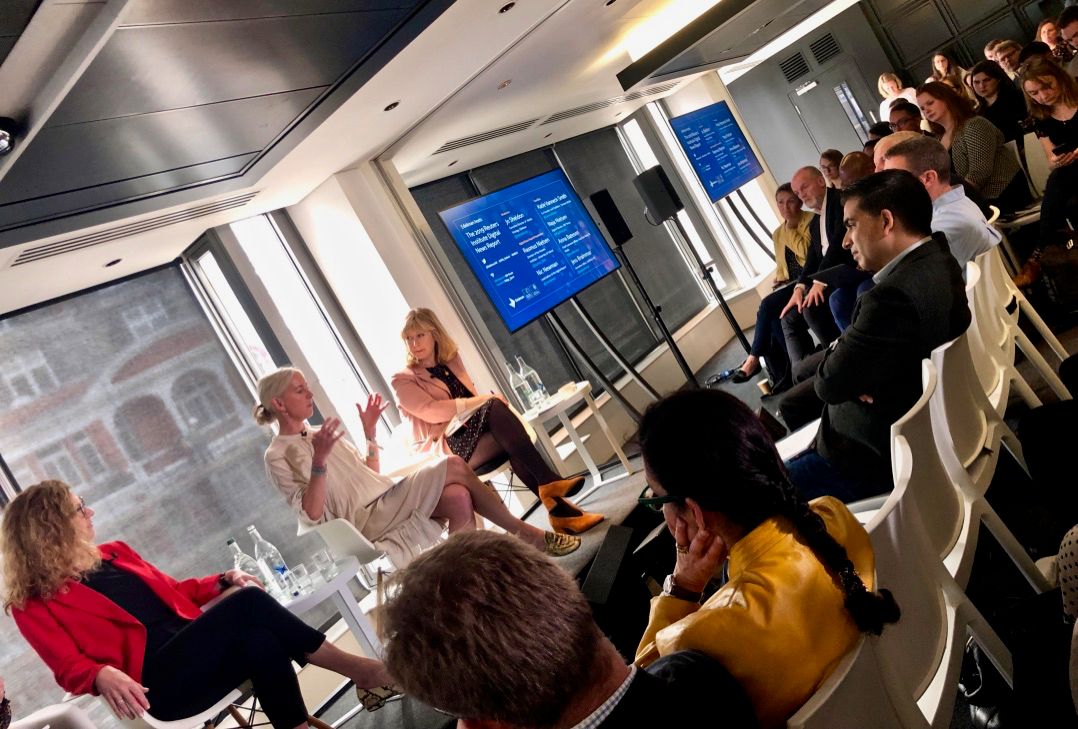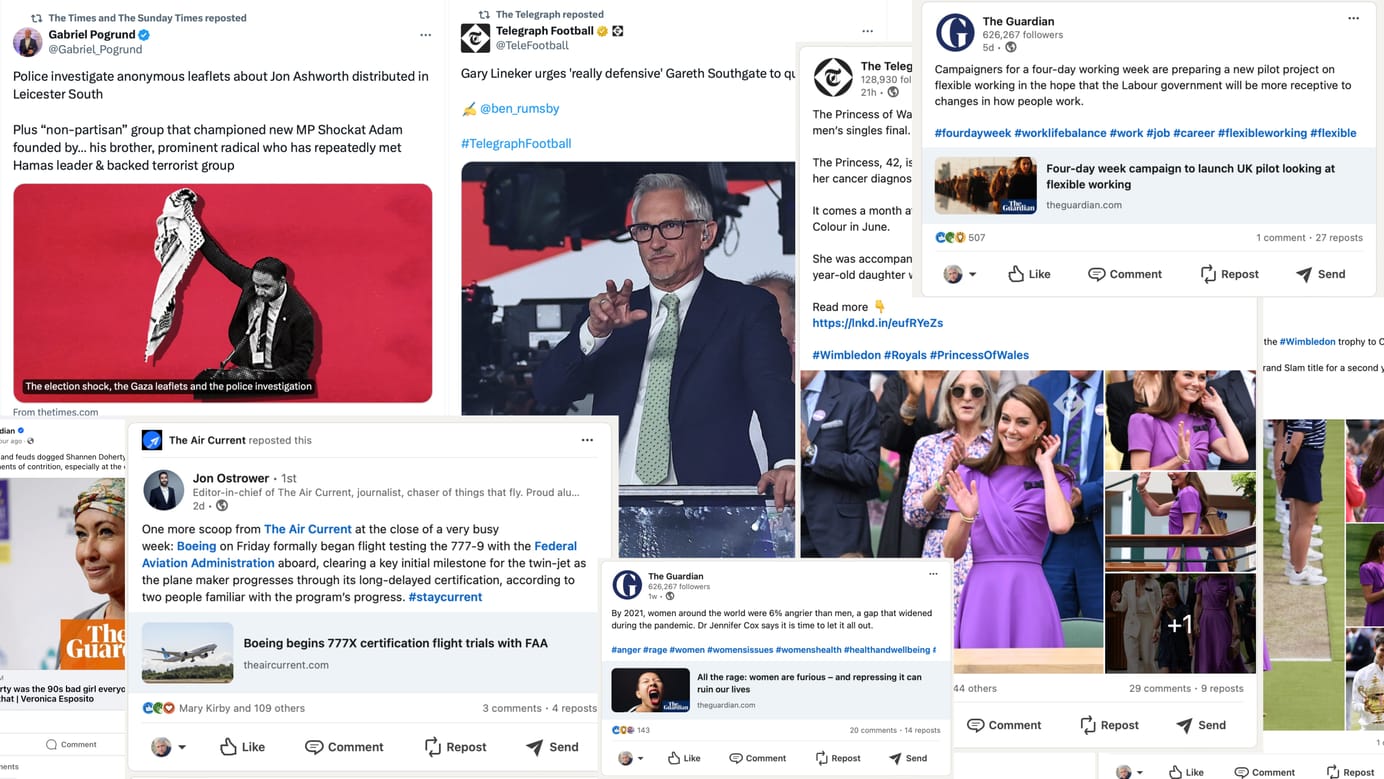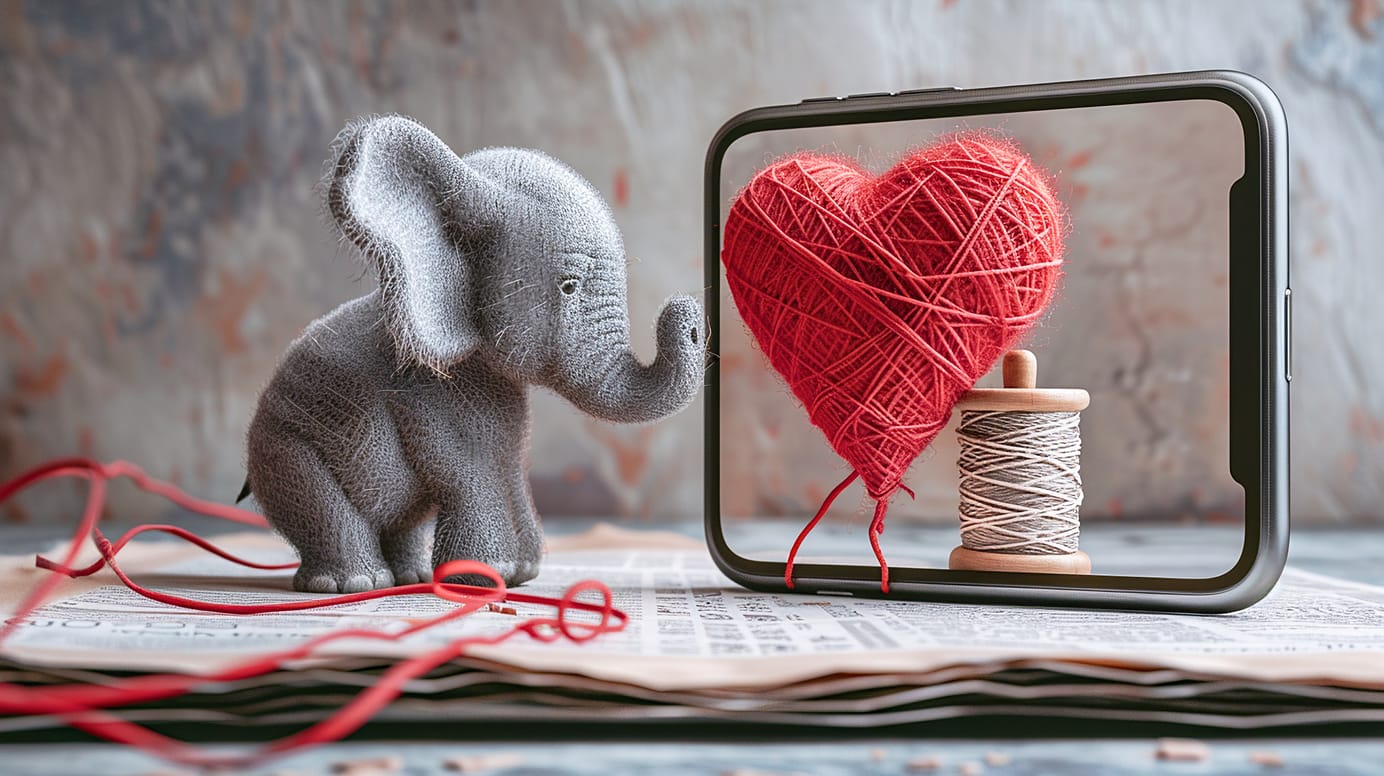
Digital News Report 2019 launch: connecting with readers and building trust in news
The annual Reuters Institute Digital News Report was published today — and a panel discussed the implications for journalism of its key findings. Here's my notes.
An early start is always a gamble: will the event be worth the 5am rise? I’m happy to say that the launch event of the 2019 Digital News Report from the Reuters Institute was more than worth sleep-deprivation. Here are my live-blogged notes from the event. Warning for inaccuracy, typos and grim crimes against syntax and grammar.

Journalism exists in the context of its audience, Reuters Institute Director Rasmus Kleis Nielsen reminded us, as he kicked off the launch event, and journalists need detailed research on news and audiences in order to serve them properly. The Digital News Report is now the biggest ongoing research exercise into digital news, and is conducted via an online poll.
Nic Newman: key points of the research
Nic introduced some of the key findings, kicking off by suggesting that we’ll find the limits of subscriptions models this year. People are cutting out less trusted news sources - but trust in news is still falling overall. The shift to private rather than public messaging is accelerating, and the report in bullish on podcasting.
There is some growth in reader revenue - but only in some countries. 16% in the Us, 9% in the UK, but the nordic countries lead the way with growth in the 20 to 30% range. Growth seems to be focused on the main publishers, so is “winner takes all” in play?

One scary fact for smaller publishers: the median number of subscriptions is one. All but the strongest brands are likely to struggle with making a paywall work. 70% of the Norwegian sample had hit a paywall in the last week. Could increased friction put people off entirely? The risk is losing both the under-engaged and the poorer.
Smartphone dominance
No great surprise here: smartphones are becoming ever more important. They have now overtaken TV as the first source of news in the morning. 28% of people in the UK reach for their phones to get news first - and 54% of the under 35s do.
One telling figure: 27% of iPhone users use Apple News weekly — a greater reach than any individual website. Young people in particular find these edited, curated services incredibly convenient. They also tend not to be aware of the originating source of the curated news.
Social switch
Facebook use is plateauing, but WhatsApp and Instagram are growing fast. Facebook has becoming less important for news - partially because of the algorithm changes. WhatsApp is incredibly important in most of the world - with the US being the exception. Being in WhatsApp groups with strangers is a key vector for the spread of misinformation in some countries.
Also a reminder that news consumption on Twitter is, unfortunately, a small bubble... Less than 10% report using the service for news. #DNR19 https://t.co/rZlbx8cp6T
— Thom Holliday (@thomhollidaaay) June 12, 2019
However, people are changing their behaviour because of concerns over misinformation. 26% are relying more on ‘reputable’ services — but that’s self-defined reputable.
People are broadly happy with the speed of news - but les satisfied with the the degree to which news is explained. And 45% feel that news in the UK is too negative. More people are feeling worn out by the news, and others claim to be avoiding it. Brexit is a key driver of that.
Many respondents to #DNR19 say not enough is done to explain the news and that it’s often too negative. Big challenge for media companies to address this. pic.twitter.com/E2CgMler9L
— Sarah Holmes (@SarahCHolmes) June 12, 2019
The pivot to audio
Podcasts are used by 36% of people at least monthly. The demographics skew young. Consumption is still largely driven by entertainment for the young, but shift to being more about learning for older age groups. They are, of course, great for multi-tasking. The young particularly appreciate the self-scheduling aspect. And people enjoy the diversity of voices and opinions that podcasts offer.
14% of people in the UK are using a smart speaker weekly - but as they grow, proportional news use is dropping.
Discussion

Panel:
- Katie Vanneck-Smith, co-founder and publisher, Tortoise Media
- Naja Nielsen, digital director, BBC News
- Anna Bateson, chief customer officer, Guardian News & Media
- Jess Brammar, executive editor, HuffPost UK
- Chair: Jo Sheldon, executive director of media strategy, Edelman UK & Ireland
Katie Vanneck-Smith: The power of the brand is a really important piece of this. I’m trying to build a brand at the moment - but we’re trading on the reputation of the journalists as we build that brand. How do we respond to customer insights? How do we change things faster?
Anna Bateson: A trusted brand has a genuine relationship with the audience. If you don’t have the relationship it’s hard to ask people to pay for something. Is it a land-grab for the one subscription people will pay for - a few trusted large brands, some specific small ones… what happens to everyone else?
Jess Brammar: We are the everyone else. There aren’t enough people willing to pay for news to support everyone. We have to find a way of supporting with news and information the people who aren’t willing to pay .

Naja Nielsen: Being connected with apps through friends all the time is great - especially if your family are overseas. But there is a downside, with the spread of inaccurate information. Everything we put out there has to be brand consistent - accurate, impartial. Maybe people are craving more solid information than we thought? Maybe we can do more about Brexit…
Katie: We were set up to solve the problem that news has become noise. ¾ of the members state that as their reason for joining. We don’t do breaking news - because there are lots of companies doing that well - we go behind the news. We don’t start by trying to explain - we start by listening. We want to be an alternative to other news, not a replacement of it.
Naja: People need to be able to discover news when they are ready for it. There are connections between breaking news and explanatory journalist that perhaps haven’t been exploited yet.
„Curation is at the core of what we do. If we hand that over to aggregators, we’ll get in a bad place”, says @NajaNielsen2 @BBCNews at #DNR19 @risj_oxford launch event. Editorial values are essential! pic.twitter.com/45ocNJuG33
— Alexandra Borchardt (@AlexaBorchardt) June 12, 2019
Anna: One of the wonderful things digital has enabled is explanations in all sorts of forms, long, short, visual… People’s behaviours change over the day. What they want in the morning is not what they want in the evening.

Jess: It’s all part of trust and accuracy. We probably have the youngest audience of all the panel - and they do consume news, but they don’t categorise it as such. They can come for Love Island and stay for Brexit.
"Content" is not marketing speak - it's how younger people often think of news. It's a bit like hiding vegetables in kids' food. We don't like to put hard and fast barriers between different "hard news" and "entertainment" on our site - @jessbrammar at #DNR19 launch pic.twitter.com/sGZjqacWtb
— Reuters Institute (@risj_oxford) June 12, 2019
Anna: News isn’t broken - but forms of news can be overwhelming.
Jess: We haven’t had the experience of people turning off from Brexit the report suggests. They want us to decode it.
Jo Sheldon asked about the risk of an exclusive news market for the wealthy — is that a danger?
Katie: Yes, we are seeing that. We all need to look at mixed models. We’re working with partners to create bursary memberships.

Anna: it’s an incredibly important part of our values to make our journalism available. The BBC is a different driver in the UK, making news available to everyone, in contrast to the US, where you do feel that only the rich will get access to high quality news.
Katie: It’s worth noting that all those titles that, as quality news publications, have gone to paid models have their biggest audiences ever now.
Jess: One of our missions in the US is to reach the un-newsed.
The challenge in the rise of private social sharing.
Jess: You want to create content that people will share to their family and friends - the problem is that the easiest way to do that is to ignore journalistic values.
Anna: It’s undermining transparency - how can we hold people to account where people are sharing in hidden groups?
Katie: We’re already seeing an impact of private local groups on local elections.
A private group in Merthyr Tydfil had grown from small roots and played a role in overturning a Labour incumbent in local elections, says @VanneckKatie They will have an impact in the UK as well. #DNR19 [I for one would like to see a study of this]
— Ben Fenton (@benfenton) June 12, 2019
Naja: What do the platforms value? Do Apple News share our editorial values? We can’t had over all our relationships to the third party platforms - but they are the best way to discover our content right now.
Anna: The power of curation is another way of bringing distinction - how you connect up your journalism. The platforms commoditise and atomise things. They take away the distinctiveness. Apple News is an entry-level product - how do you get people to move up to a more distinctive product?
Is the pivot to audio real?
Anna: Podcasts are wonderful - easy, convenient and valuable as a form. Not all journalism translates into video, but audio seems to be an easier transition. There is a question about how you make money out of them. But if you get the audience, the money will follow.

Katie: We do get asked for more audio: article readings, recordings of the ThinkIns. It’s consistent feedback.
Anna: Our long reads are one of our most successful podcasts - it solves a genuine problem.
Katie: One young person said she feels like she’s wasting her time if she isn’t listening to something.
Naja: There is a real appreciation for depth. They may be chatty, but it is people spending 25 minutes discussing something.
Jess: The single best way to attract younger audiences is to hire some of them - and listen to them. It’s not enough to hire them, you have to listen.
Q&A
Attracting Young People
Naja: There is a big difference between 12 and 25. At 25 you discover banking… There’s a curiosity that grows then as you start wanting to actually bring a brown up. People have a very fixed understanding of what news is. We, as a craft, might have a reputation issue here - the world is good and bad. We might get better at solutions journalism, for example.
Katie: Our “ThinkIn” format has been a genuine success. They’re one of the main draws for our younger, under-30 members. That, and the free wine.
Jess suggested that the most useful comment she had from a young person was that watching Brexit coverage was like starting a TV show at season seven episode 3.
On engaging younger audiences: we need to work harder to get out of our newsrooms and our bubbles - @VanneckKatie of @tortoise. This also helps us question our potentially erroneous assumptions, agrees @NajaNielsen2 of @BBCNews at #DNR19
— Emma Goodman (@EmmaMayAlex) June 12, 2019
Other Key Quotes:
Katie: we talk ourselves down all the time. Why do we say “paywall”? You want to break down walls. Netflix talks about subscriptions…
Most journalists are really good at talking it down! @VanneckKatie has a great point about language. Along with “paywall” let’s ban the word “content” and my personal bugbear “micropayment” #DNR19
— Dominic Young (@dominicyoung) June 12, 2019
Anna: How you connect news literacy and digital literacy, and how you weave that into the curriculum will be an increasingly important part of your education as a good citizen. Are people entering a more mature phase of their digital use?
Transparency incredibly important, says @AnnaBateson Being consistent with your principles. Teach people value of news, good citizenship. #DNR19
— Ben Fenton (@benfenton) June 12, 2019
"One person's misinfo can be another person's favorite news source", says @benfenton. Do we need to collaborate more to ensure everyone get quality news?@jessbrammar yes@NajaNielsen2 yes@VanneckKatie competition matter but yes@AnnaBateson future all about collaboration#DNR19 pic.twitter.com/QPTwyF3LpN
— Rasmus Kleis Nielsen (@rasmus_kleis) June 12, 2019
About collaborations: this is the joint project by @HuffPostUK and @TBIJ that @jessbrammar just mentioned https://t.co/NBbD72EbtZ #DNR19
— Federica Cherubini (@fedecherubini) June 12, 2019
Katie: Snap allows the brands to stand out - Apple News doesn’t - which is one of the problems with it.
The Digital News Report 2019 is available for download. I’ll be publishing some of my thoughts on it over the next couple of days.
Sign up for e-mail updates
Join the newsletter to receive the latest posts in your inbox.










